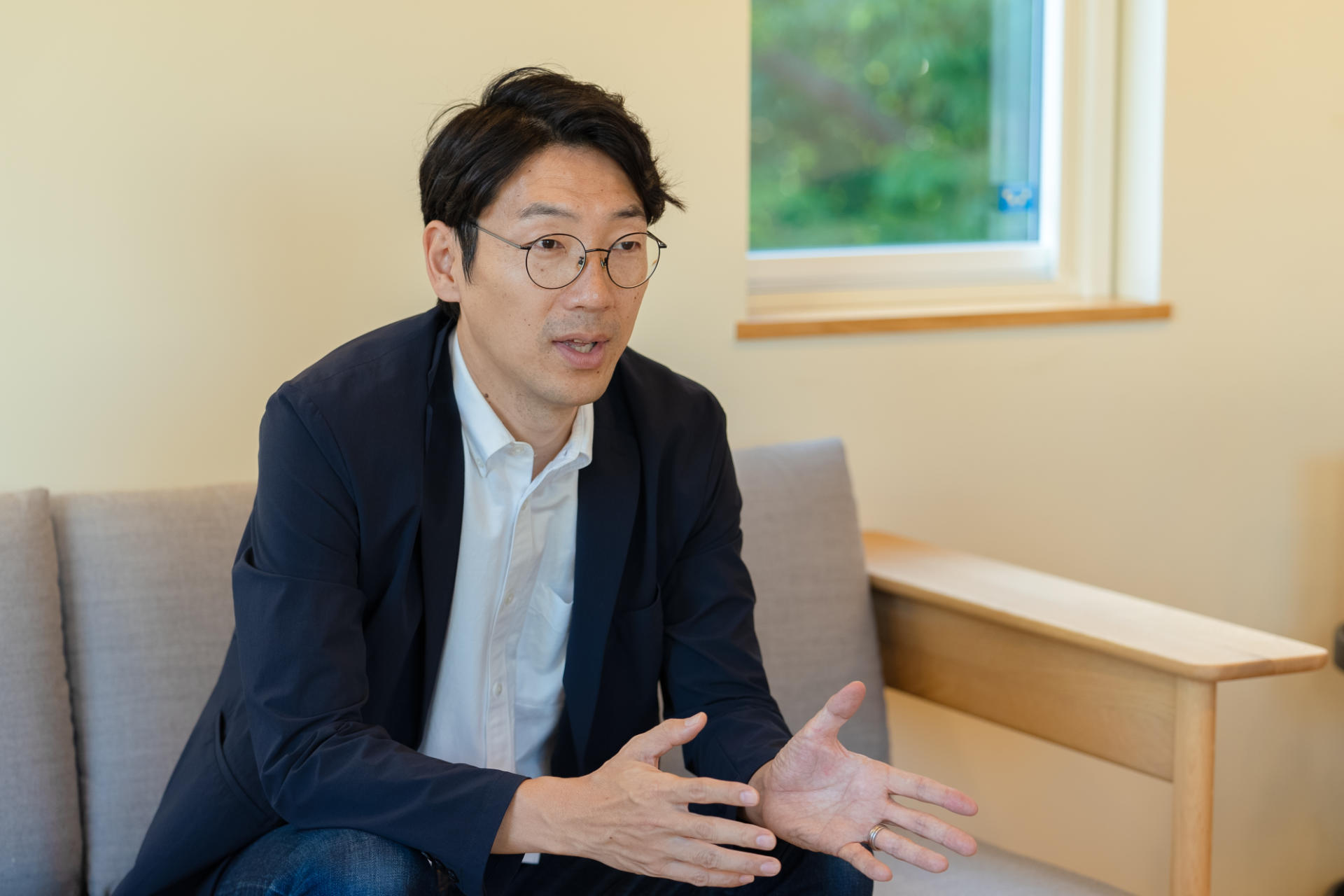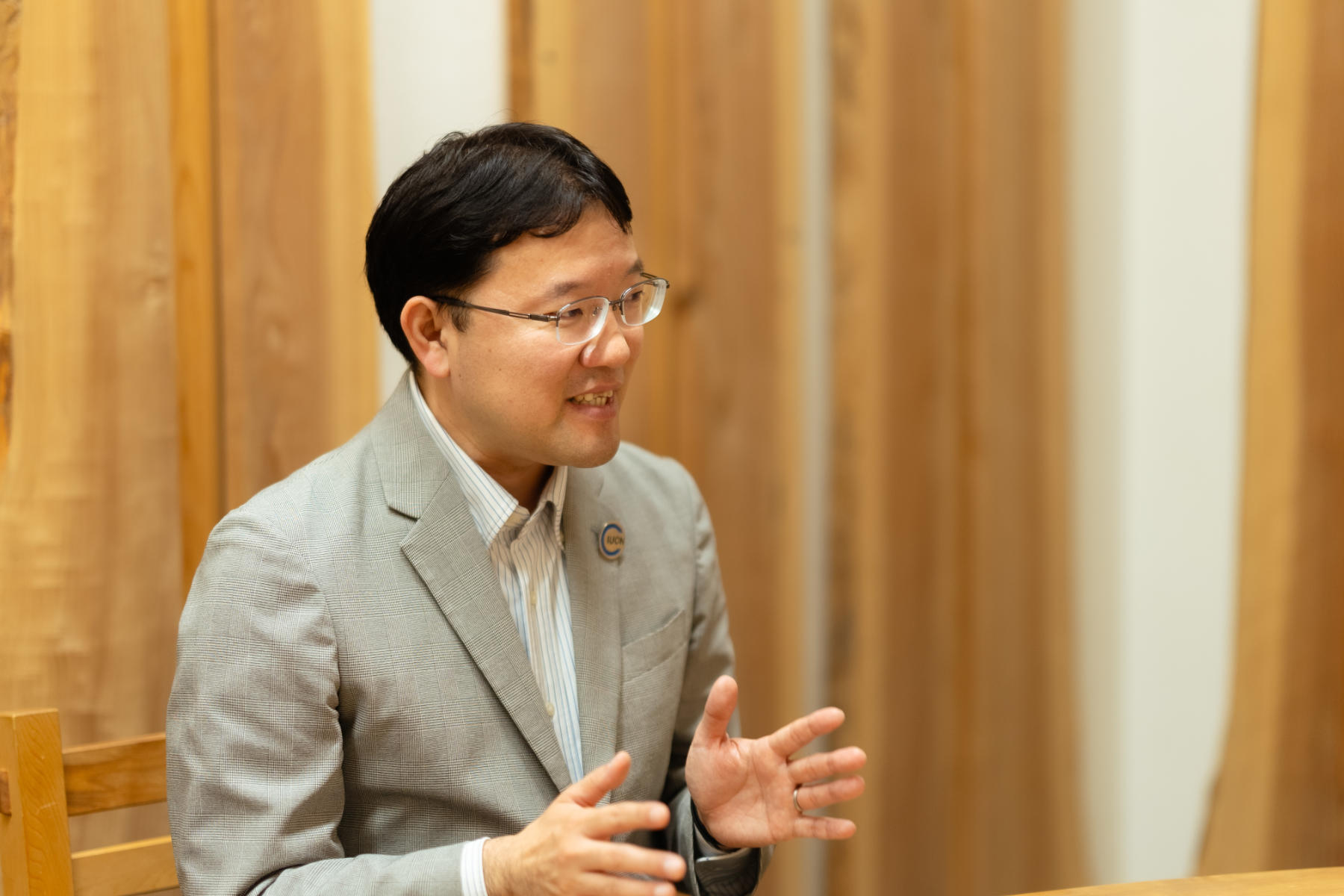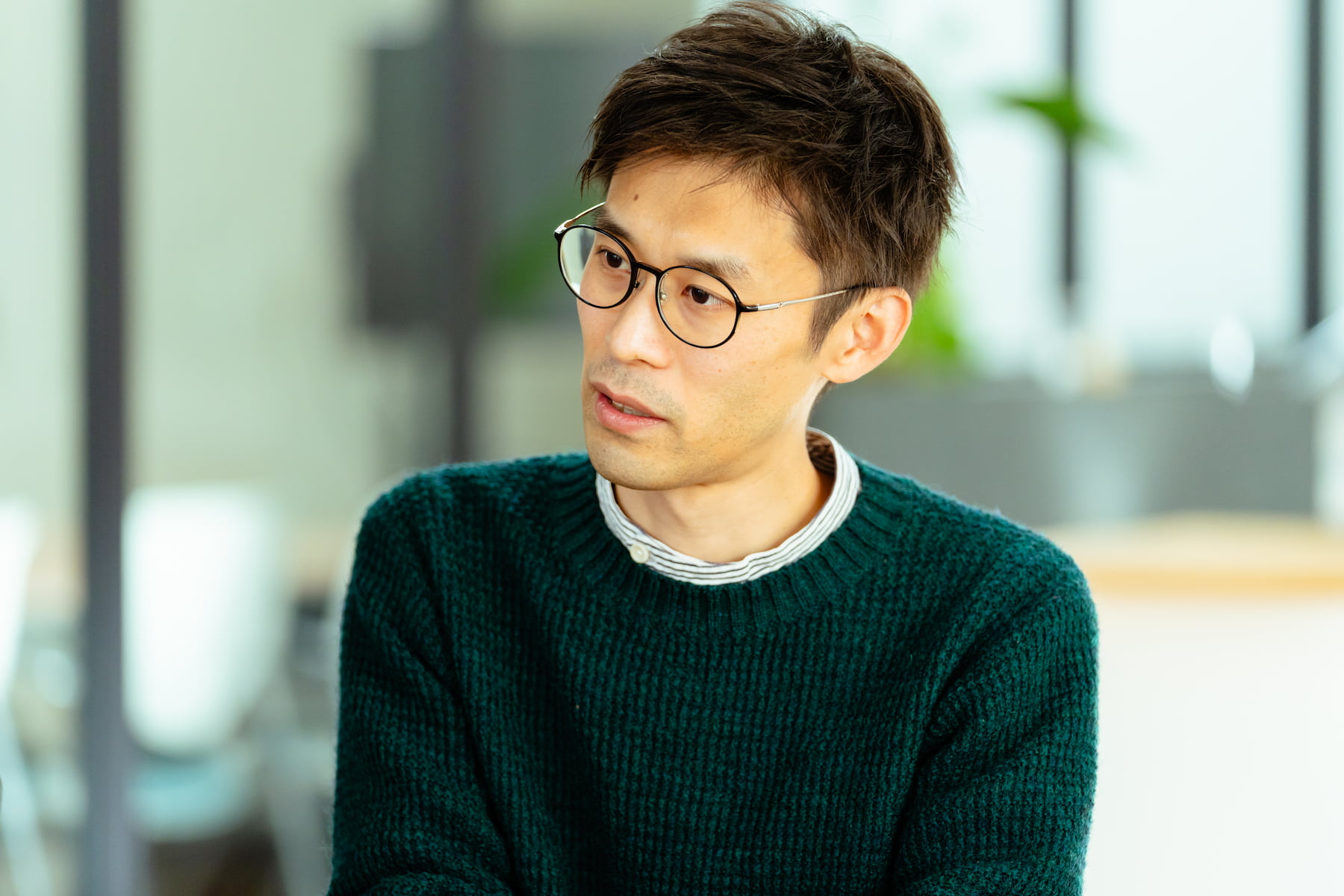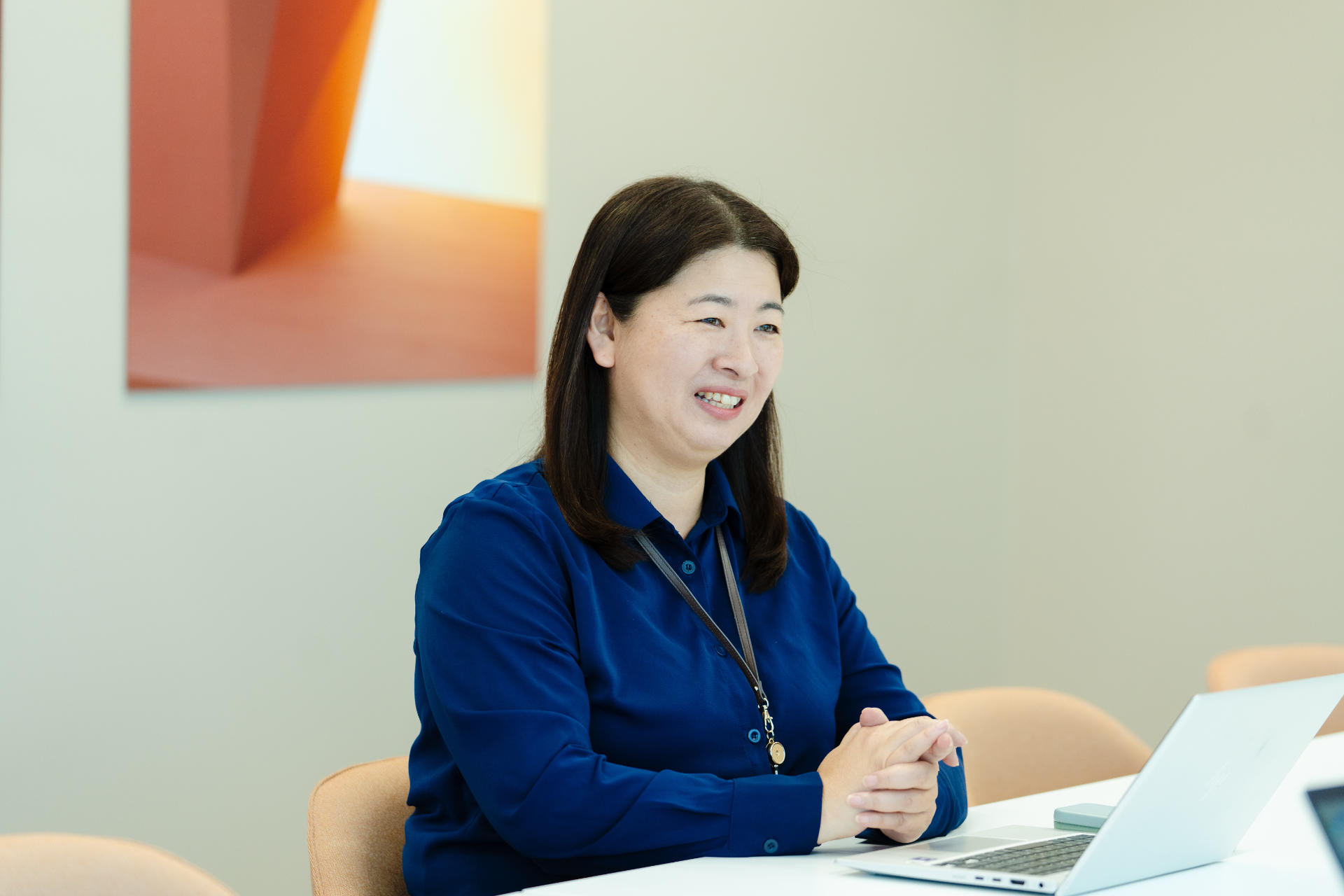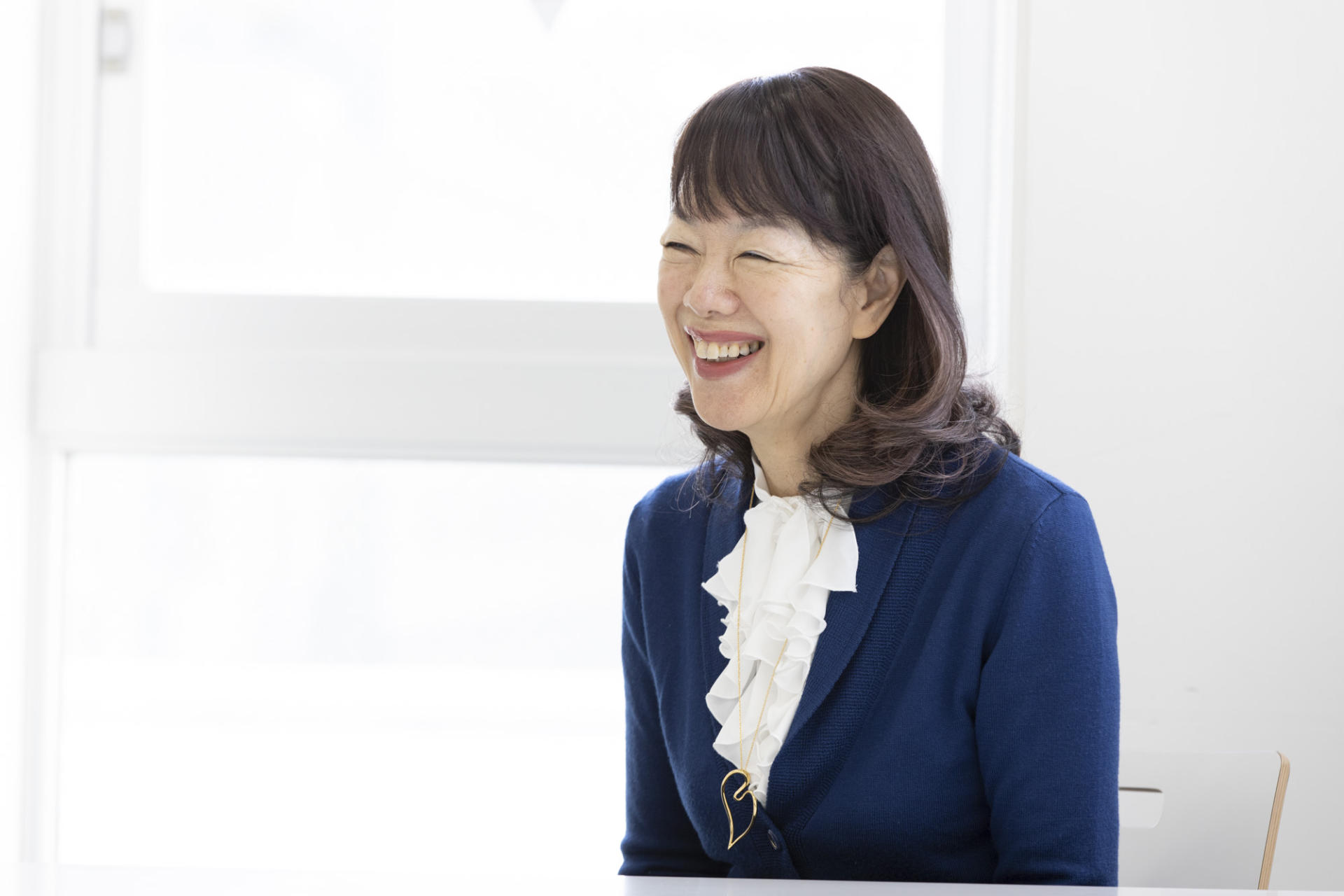CASE 03
WWF Japan
(April 2016 –)
Innovation for the strategic public relations as a member of the team.
WWF Japan is an environmental conservation organization working in about 100 countries, aiming for a future where humans can live in harmony with nature. Their “media team”, which currently consists of six members, is in charge of the whole public relations in this organization. In the two and a half years they partnered up with Hitoshizuku – how has the PR with WWF Japan changed? We interviewed Ms. Asami Yamamoto, chief of their Media Group in the Communications & Marketing Department.
The first year – a total system reform for strategic public relations. Teamed up with Hitoshizuku and built a new operation system.
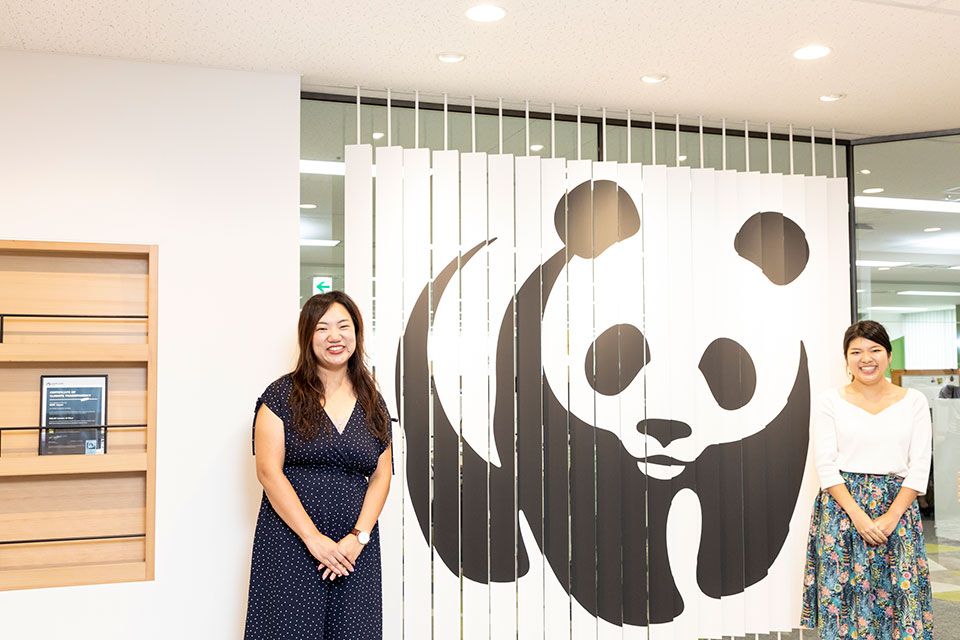
Ms. Asami Yamamoto, the chief of their Media Group in the Communications & Marketing Department, WWF Japan and Asuka Takahashi of Hitoshizuku
Takahashi of Hitoshizuku (hereinafter, Takahashi):
First, would you tell me what kind of challenges did you have when you consulted us?
Ms. Asami Yamamoto of WWF Japan’s media team (hereinafter, Ms. Yamamoto):
Well, what we had at the beginning was a recognition that we needed to approach the media strategically.
Personally, I started working for PR when I got into WWF, so I had almost no experience. And I think because of that, we’d just completed tasks done without knowing the goals. We’d just formatted press releases from other departments and passed them on to the media, or simply wrote what we wanted to say and released them.
Regarding the system, while there wasn’t the Media Group that we have now, we did have a PR department where there were people who made a newsletter for sponsors, who was in charge of coordinating with corporate sponsors, etc. Sometimes I was the only person who was working with the media. Those days we were just hitting back what came in front of us and didn’t have an overall strategy, so we were always insecure, whether what we were doing was right. Without that wholeness, it’s no wonder we didn’t have a routine to check or evaluate the results.
Not only me but members of the PR department had been aware that we needed a PR strategy and change, but we didn’t know what to do. That began to change in 2016, when we decided to launch a department called “Media Group” that aims for “better communication with the media”, “greater exposure of articles and information” and “greater exposure and a full picture of our strategy”. At that time, we consulted with Mr. Kokubo of Hitoshizuku, whom we had known, starting with how to establish the system.
Takahashi:
Also for us, WWF Japan is the one of the organizations that we’ve been supporting the longest, and we helped you start from the foundation of a PR system. I guess you had a lot of difficulties especially at the beginning of building the system, didn’t you?
Ms. Yamamoto:
Right. Since you became a member of the team, we’d worked on our reform on the basis of a five-year plan, and looking back, the first year was a hard time. We needed to start over with a clean slate as to what and how we were going to release to the media. We had been handling our work without thinking much or “hitting back what we have in front of our eyes”, but we started to build a system for them and sorted them out so that we can operate efficiently.
For example, the way we handle press releases has dramatically changed. Previously, each department would ask for the release in different forms via emails and such, and I made each of them into a release format and send it to media. Now, the person in charge in each department writes the first draft from a proposal sheet template, and the media group staff changes the approach or modifies it from a strategic perspective before releasing it. It feels that working with thinking of the goal of the release is creating a qualitative change. It seems that the way we work now is achieving not only higher efficiency but higher accuracy. Also, I feel that, from the discussions over the course of making the release, the person in charge in each department who requests the press release understands the kind of viewpoint needed to catch the attention of the media.
As the reformation involved other departments, we needed a lot of power to move forward while working as usual. Fortunately, members of our media team are quite up-front, and I think we could share the work well with good teamwork.
Understanding the role of in-house PR over the course of the reformation
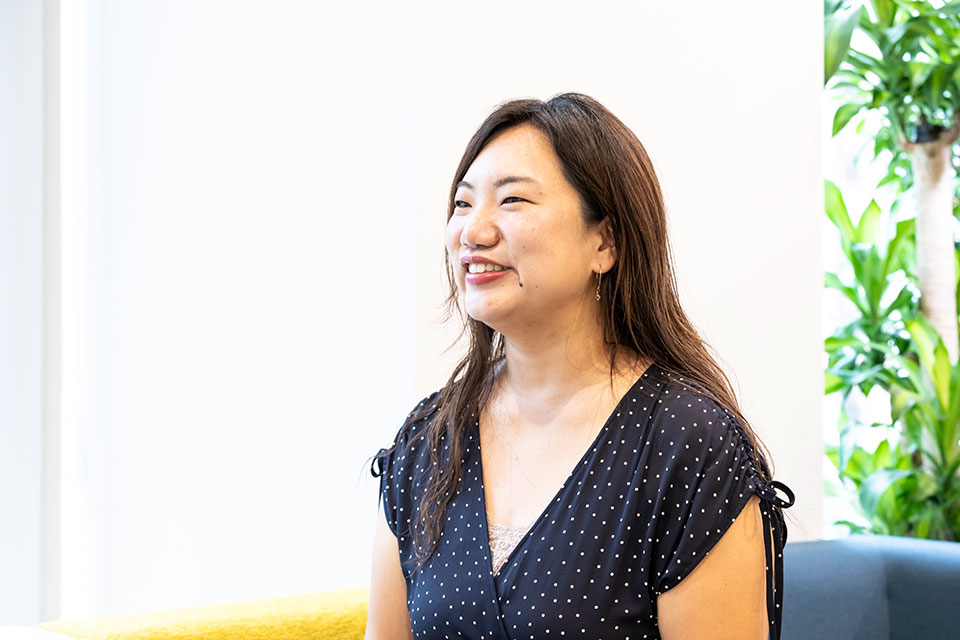
Ms. Yamamoto of the media team
Takahashi:
The system changed in April 2016, so it’s been about two and a half year now in October 2018. And it’s about a half of our five-year plan, but are there any results for now or any new challenges?
Ms. Yamamoto:
Of course, managing time and the process has become more efficient through the reformation, but in addition, I think it’s a big change that we could get a viewpoint from outside. Whether this information is what the media would introduce at the time, or whether people want the information… As a media team, we’ve come to be able to see the release through those lenses.
But to be honest, people in other departments still see us as the “people who renew the website” or the “people who receive our press releases and send them to the media”, so that is a challenge for the future. We want them to come to us earlier and want to give them an outside perspective so that we can release the information that reaches people’s hearts, but when we get a draft of a release with content or timing with no room for change, in many cases we have no choice but to release it as it is.
I feel that we need to show people inside the organization that we are not just sending out their releases, and they can rely on us more.
Takahashi:
You’d been thinking that you had to do something not only for the reformation of the work with the media but also for enforcement of public relations inside the organization, right?
Ms. Yamamoto:
When we were talking with Mr. Kokubo about founding the Media Group, he told us that the function of public relations in an organization is releasing their information to the public, but it also should be “a hub for information” as well.
WWF Japan is developing various projects, so public relations starts from catching up with attractive information inside the organization. Working to catch up with them should create a value more than just PR for the organization. Since we launched this group, I’ve joined other groups’ meetings in order to catch up with what’s going on in those other groups. Now many people have started to ask us what other teams are doing, and I also hear the way they report or discuss inside the team has changed. Not only just attending the meetings, but they also give me some time and say, “Would you share what other teams’ are doing?”. That’s exactly a role as a hub, and I feel that we’re in that position more and more.
Takahashi:
What project do you currently evaluate as worth doing?
Ms. Yamamoto:
What I value the most is that we now have a system where we can monitor things well. We had been monitoring our work with the media or researched responses on social media on the side, in our own way. Now we clearly see how much exposure we have and feel confident about what people are interested in or talking about through social media. Conversely, we can visualize what tweets or words could pose a risk, so we don’t have to worry unnecessarily, which I think is a great progress, too.
We are now able to evaluate our PR not vaguely, but properly, based on half-term or yearly data. Also, by that, the media team itself received good evaluations from within WWF Japan.
“We think of Hitoshizuku as a member of our team”
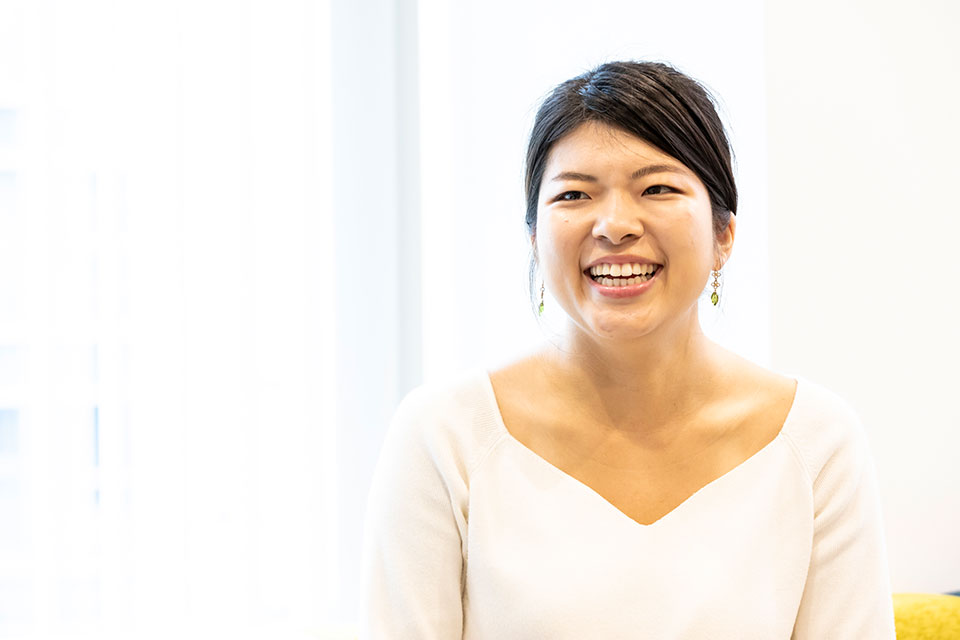
Asuka Takahashi of Hitoshizuku, who works with WWF Japan
Takahashi:
How about the assessments of Hitoshizuku? Any unsatisfying things or anything you’re expecting in the future? Tell me anything.
Ms. Yamamoto:
I think what NGOs promote is completely different from what corporations promote since we release our statements or reports. Most people from a PR company don’t understand that. However, as Hitoshizuku aims for solving social issues, we have the same motivations and sensitivies. You understand our situation without detailed explanations, so you’re very easy to work with. We feel very grateful that you’ve been giving suggestions for us side by side.
We’re outsourcing a job to you and you’re a contractor, but personally I feel like people of Hitoshizuku are members of our team. So sometimes I drop something off that’s completely irrelevant and unimportant. (laughs)
Takahashi:
No, no, I don’t think you have ever come to us with anything unimportant. I think everything you consult us is always important! (laughs)
Ms. Yamamoto:
Okay, that’s a relief! As for what we expect in the future, I’d like you to be someone we can continue to consult with at ease. We don’t want you to feel hesitant, and we don’t want to be either. We’d like to keep this relationship where we can talk about anything.
In the end, I think whether you want to work with a person or not comes from their personality. As for the people in Hitoshizuku, when I saw your website, I laughed because all of you looked like your president, Mr. Kokubo. I guess as there is a strong principle behind what to do – birds of a feather flock together.
“I hope that eventually we can do publicity work that will be a role model for other NGOs”
Ms. Yamamoto:
Another big change brought by Hitoshizuku was that we got a viewpoint from the outside. Specifically, there are many specialists of various fields in WWF Japan, but we hadn’t publicized that. Being pointed that out, we took a photo of each of them, which led us to work that garnered more trust for our organization. Also, you’ve told us that we have to value the conversations and relations with each one of the reporters in the media.
Since you started to be involved, our work with the media has received well by other NGOs or NPOs and has given us more of a chance to be asked about our work. I feel very happy if our work gets attention or is followed by someone doing a similar job.
We have lots of things to think about day after day, and there is no one answer to PR. That’s why the existence like Hitoshizuku, a peer from an outside organization who struggles together with us, is so important. PR work doesn’t always get immediate results and needs a long-term plan. I thought again this time that a personality like all of yours at Hitoshizuku, with whom we can work together in the long term, is very important. We’re looking forward to continuing to work with you.
Photograph : Chisato Hikita
Editing : Takako Chiba
RECENT WORKS
| Name | Hitoshizuku Inc. |
| Address | 33 Nihonodori Naka-ku Yokohama Kanagawa 231-0021 JAPAN |
| Branch | Hamacho Odawara Kanagawa 250-0004 JAPAN |
| Phone | 81 045 900 8611 |
| info@hitoshizuku.co.jp |
| President | Hiroshi Kokubo |
| Established | March 2016 |
| Capital | 3,000,000yen |
| Business | Advertising & Public Relations Agency Planning & Produciton of Social Good Projects |
| Lawyer | Junna Tei / Yokohama First Law Office |
| Tax Advisor | Satoru Motokoide / Uniques Money Advisory |
| Labor and Social Security Attorney Office Work Innovation | |

